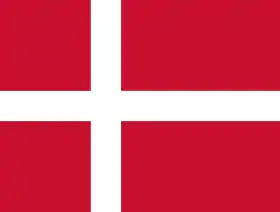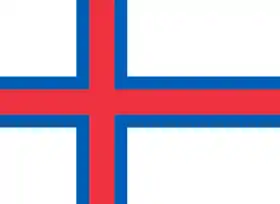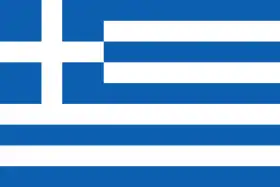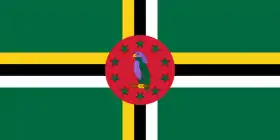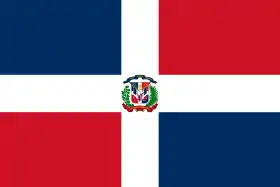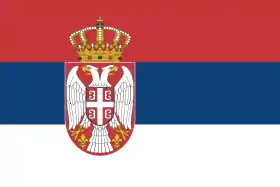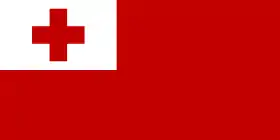العلم المسيحي
العلم المسيحي هو علم صمم في أوائل القرن العشرين لتمثيل كل من المسيحية والعالم المسيحي، وكان أكثر شعبية بين الكنائس المسيحية، خصوصاً تلك ذات التقاليد البروتستانتية، لا سيما من أصل بروتستانتي، بما في ذلك الكنيسة الأنجليكانية،[1] والمعمدانية،[2] والمينوناتية،[3] والكنيسة المورافية،[4] واللوثرية،[5] والمشيخية،[5] وجمعية الأصدقاء الدينية،[6] والإصلاحية، والميثودية وغيرها.[7] في أمريكا الشمالية وأفريقيا وأمريكا اللاتينية هي من مناطق العالم التي يظل العلم فيها شائعًا، في حين أنه أقل شيوعًا في أماكن أخرى، لا سيما في أوروبا.[8]
| عَلم مسيحي | |
|---|---|
 العَلم المسيحي | |
| ألوان | |
| الاعتماد | 1942 |
| الاختصاص | عالم مسيحي |
| التصميم | خلفية بيضاء عليها صليب أحمر لاتيني داخل كانتون ازرق |
| المصمم | تشارلز سي أوفرتون ورالف يوجين ديفندورفر |
العلم ذو خلفية بيضاء، مع صليب لاتيني أحمر اللون داخل كانتون ازرق. اللون الأحمر على الصليب يرمز إلى دم يسوع الذي سفك على الجلجثة.[9] واللون الأزرق يمثل مياه المعمودية، وكذلك الخلاص بيسوع. الأبيض يمثل النقاء والطهارة.[10] ويرتبط اللون الأبيض بللا عنف في إشارة إلى نبذ العنف في الكتاب المقدس.[10]
أصول
تم رفع العّلم المسيحي لأول مرة في 26 سبتمبر من عام 1897، في برايتون تشابل في كوني آيلاند في بروكلين، في مدينة نيويورك في الولايات المتحدة. ألقى المشرف على مدرسة الأحد، تشارلز س. أوفرتون، محاضرة مرتجلة للطلاب المتجمعين، ولأن المتحدث المقرر لم يصل إلى الحدث. ألقى خطابا يسأل الطلاب عما سيبدو عليه العلم الذي يمثل المسيحية.[11] فكر أوفرتون في خطابه المرتجل لسنوات عديدة بعد ذلك. في عام 1907، قام أوفرتون ورالف ديفندورفر، وهو سكرتير الحركة التبشيرية الميثودية الشعبية، بتصميم وبدء ترويج للعلم.[12] وفيما يتعلق الرمزية المسيحية للعلم المسيحي:
إعتمد التنظيم المسكوني، المجلس الاتحادي للكنائس، والذي لحقه المجلس الوطني للكنائس والكنائس المسيحية معاً، العلم في 23 يناير من عام 1942؛[13][14] ويضم المجلس الوطني كل من الكنيسة الأنجليكانية والمعمدانية، والأرثوذكسية الشرقية، والمينوناتية، والميثودية، والكنيسة المورافية، اللوثرية، والأرثوذكسية المشرقية، والمشيخية، وجمعية الأصدقاء الدينية، والكنائس ذات التقاليد الإصلاحية، من بين آخرين.[15] وقام المصمم بتكريس العلم لكل العالم المسيحي.[16] وكرست الكاتبة فاني كروسبي، ترنيمة بعنوان «العلم المسيحي»، مع الموسيقى من قبل ر. هنتنغتون وودمان، على شرفها. ومثل العلم، الترنيمة هي أيضاً تحت الاستخدام المجاني.[17] في يوم الأحد الأقرب إلى 26 سبتمبر من عام 1997، احتفل بالذكرى السنوية المائة لتصميم العلم المسيحي.[18]
الاستخدام

إعمتدت الطوائف البروتستانتية الرئيسية في الولايات المتحدة العلم أولاً، وبحلول عقد 1980، إعتمدت العديد من المؤسسات المسيحية العلم داخل الكنائس.[19] وأوصى المجلس الإتحادي للكنائس بأنه إذا كان سيستخدم العلم المسيحي جنباً إلى جنب مع العلم الوطني، فإن العلم المسيحي يجب أن يحصل على مكان الشرف.[20] خلال الحرب العالمية الثانية، نُقل العلم إلى جانب العلم الأمريكي في عدد من الكنائس اللوثرية، والعديد منهم ذو خلفيات ألمانية، أرادوا إظهار تضامنهم مع الولايات المتحدة أثناء الحرب ضد ألمانيا النازية.
ينتشر العلم المسيحي خارج أمريكا الشمالية من خلال المبشرين المسيحيين.[21] يمكن رؤيتها اليوم في العديد من الكنائس المسيحية أو خارجها في جميع أنحاء العالم، ولا سيما في أمريكا اللاتينية وأفريقيا.[21] وقد اعتمد العلم حتى الآن من قبل بعض الكنائس البروتستانتية في أوروبا وآسيا وأفريقيا أيضاً.[8] وبدأت الكنائس الأرثوذكسية الشرقية، وخاصةً الأبرشيات ذات تقاليد الطقوس الغربية، وفي الآونة الأخيرة فقط في استخدام العلم.[22] ليس للعلم المسيحي براءة اختراع، وبالتالي، «يجوز لأي شخص تصنيعه، ويمكن استخدامه في جميع المناسبات المناسبة».[23] من المعتاد أن يتم رفع العلم المسيحي مقابل العلم الأمريكي في المدارس المسيحية الإنجيلية. في كندا والولايات المتحدة ، دخل المتقاعدين والانفصاليين في نقاش حاد حول شرعية رفع العلم المسيحي فوق المباني الحكومية.[24][25]
أعلام الطوائف المسيحية
تتخذ عدد من الطوائف والجماعات المسيحية في كافة أنحاء العالم أعلام خاصة بها جنبًا إلى جنب العلم المسيحي.[26]

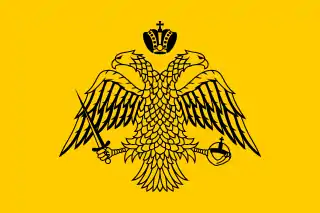 علم الكنائس الأرثوذكسية الشرقية
علم الكنائس الأرثوذكسية الشرقية علم مجمع الكنائس الأنجليكانية
علم مجمع الكنائس الأنجليكانية علم الكنيسة الاسقفية
علم الكنيسة الاسقفية

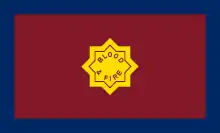 علم جيش الخلاص
علم جيش الخلاص علم الآشوريون
علم الآشوريون علم السريان
علم السريان
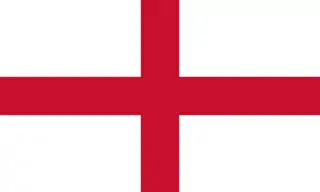 علم صليب القديس جورج
علم صليب القديس جورج علم كنيسة ويلز
علم كنيسة ويلز علم القديس باتريك
علم القديس باتريك علم صليب يوحنا المعمدان وهو علم فرسان مالطة
علم صليب يوحنا المعمدان وهو علم فرسان مالطة
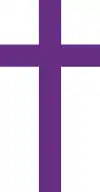 علم الكنائس البروتستانتية في ألمانيا
علم الكنائس البروتستانتية في ألمانيا
الشعارت المسيحية في الأعلام الوطنية
تحوي جميع الأعلام أخذت فكرة علم الدنمارك، بما في ذلك علم فنلندا، وعلم جزر فارو، وعلم آيسلندا، وعلم النرويج وعلم السويد على الصليب المسيحي، وهو ما يمثل المسيحية.[27][28] يتكون علم المملكة المتحدة، من صليب أحمر للقديس جورج (شفيع انكلترا) محاط بإطار أبيض الذي يشكل صليب القديس باتريك (شفيع إيرلندا الشمالية). بالإضافة إلى صليب قطري بشكل إشارة أكس X الذي يكّون صليب القديس أندرو (شفيع اسكتلندا).[29] بالإضافة إلى ذلك، يحتوي علم اليونان، فضلاً عن علم سويسرا، على الصليب المسيحي لتمثيل الإيمان المسيحي.[30] كما يرمز الصليب على علم دومينيكا للمسيحية في حين أن الألوان الثلاثة ترمز إلى الثالوث، كما يحتوي شعار النبالة في علم سلوفاكيا على الصليب المزدوج رمز المسيحية السلافية.[31] ويصور علم جمهورية الدومينيكان الكتاب المقدس وصليب.[31] كما ويحتوي كل من علم جورجيا، وعلم مولدوفا، وعلم صربيا على الصليب كتمثيل للديانة المسيحية.[31] ويحوي أيضًا علم البرتغال على رموز مسيحية، تمثّل خمسة جروح المسيح.[32]
مراجع
- Baklinski, Pete (24 مارس 2016)، "'It's homophobic': Gay activists target flag bearing Christian cross" (باللغة الإنجليزية)، Life Site News، مؤرشف من الأصل في 17 مايو 2019، اطلع عليه بتاريخ 08 يوليو 2017،
St. Stephen the Martyr Anglican Network Church asked the government to raise the Christian flag to mark Easter week, where Christians commemorate the death and resurrection of Jesus Christ.
- Grose, Howard Benjamin (1917)، Missions: American Baptist International Magazine (باللغة الإنجليزية)، American Baptist Convention، ص. 49،
Side by side in many of our churches hangs the Christian Flag with the Stars and Stripes—the Flag of White— which forever has stood for peace, having in the corner on the field of blue, the color of sincerity, faith and trust, the red Cross symbolic of Calvary.
- Lind, Hope Kauffman (01 يناير 1990)، Apart & Together: Mennonites in Oregon and Neighboring States, 1876-1976 (باللغة الإنجليزية)، Herald Press، ص. 277، ISBN 9780836131062،
Most congregations of Russian Mennonite heritage displayed both the national and the Christian flag in the church sanctuary.
- "Moravian Movement" (باللغة الإنجليزية)، 08 ديسمبر 2014، مؤرشف من الأصل في 12 يونيو 2018، اطلع عليه بتاريخ 08 يوليو 2017،
The Moravians created a seal. The seal has a picture of a sheep holding a cross with the Christian flag attached. It says, “Our lamb has conquered. Let us Follow Him.” This symbolizes Jesus conquering sin, and the Moravian’s commitment to follow Him.
- Logan, Devin (01 مايو 2015)، "Christian Flag: Which Denominations Say Its Pledge" (باللغة الإنجليزية)، نيوزماكس، مؤرشف من الأصل في 28 مارس 2019، اطلع عليه بتاريخ 08 يوليو 2017.
- Roberts, Arthur O. (1978)، Tomorrow Is Growing Old: Stories of the Quakers in Alaska (باللغة الإنجليزية)، Barclay Press، ص. 446، ISBN 9780913342220، مؤرشف من الأصل في 11 يناير 2020، اطلع عليه بتاريخ 08 يوليو 2017.
- Schuppert, Mildred W. (1982)، A Digest and Index of the Minutes of the General Synod of the Reformed Church in America, 1906-1957 (باللغة الإنجليزية)، Wm. B. Eerdmans Publishing، ص. 105، ISBN 9780802819437، مؤرشف من الأصل في 8 مايو 2022.
- Fifty-Eighth Annual Session، Order of the Eastern Star، 1932،
Today the Christian Flag is flying over Europe, Asia and Africa, as well as America.
- "The Christian Flag"، جامعة بوب جونز ، مؤرشف من الأصل في 14 نوفمبر 2010، اطلع عليه بتاريخ 2007–10–18،
The white on the flag represents purity and peace. The blue stands for faithfulness, truth, and sincerity. Red, of course, is the color of sacrifice, in this case calling to mind the blood shed by Christ on Calvary, represented by the cross.
{{استشهاد ويب}}: تحقق من التاريخ في:|تاريخ الوصول=(مساعدة)صيانة CS1: extra punctuation (link) - "The Christian Flag"، Prayer Foundation، مؤرشف من الأصل في 22 أبريل 2017، اطلع عليه بتاريخ 2007–10–18،
The flag's most conspicuous symbol is the Christian cross, the most universal symbol for Christianity. The red color represents the blood of Christ and brings to mind his crucifixion. Christians believe that Jesus Christ's death and resurrection is the means God uses to save believers from their sins. The cross and blood have been used since earliest Christianity to symbolize salvation through Jesus; in the words of the Apostle Paul, "And having made peace through the blood of his cross, by him to reconcile all things unto himself;" -Colossians 1:20. The white field draws on symbolism throughout the Bible equating white clothes with purity and forgiveness. People who have been "washed white as snow" in the Bible have been cleansed from their sins (Isaiah 1:18; Psalm 51:2). In conventional vexillology (the study of flags, their history and sybolism), a white flag is linked to surrender, a reference to the Biblical description Jesus' non-violence and surrender to God's will. The symbolism behind the blue canton has been interpreted to represent Heaven, truth, or the Christian ritual of Baptism in water.
{{استشهاد ويب}}: تحقق من التاريخ في:|تاريخ الوصول=(مساعدة) - "Christian Flag"، The Christian Advocate، New York: T. Carlton & J. Porter، 84، 07 يناير 1909،
Within recent years (1897) a flag has been designed which shall stand as an emblem; (Jesse L. Jones-McKay) which all Christian nations and various denominations may rally in allegiance and devotion. This banner is called the Christian flag. It was originated by Charles C. Overton of Brooklyn, N.Y., whose first thought of it came to him while addressing a Sunday school at a rally day service. The flag is most symbolic. The ground is white, representing peace, purity and innocence. In the upper corner is a blue square, the color of the unclouded sky, emblematic of heave, the home of the Christian; also a symbol of faith and trust. in the center of the blue is the cross, the ensign and chosen symbol of Christianity: the cross is red, typical of Christ's blood. The use of the national flag in Christian churches has become almost universal throughout the world.
- Coffman, Elesha، "Do you know the history of the Christian flag?"، Christianity Today، مؤرشف من الأصل في 29 يناير 2016، اطلع عليه بتاريخ 24 أبريل 2014.
- Kurian؛ Lamport (10 نوفمبر 2016)، Encyclopedia of Christianity in the United States (باللغة الإنجليزية)، Rowman & Littlefield Publishers، ص. 1359، ISBN 9781442244320، مؤرشف من الأصل في 31 مايو 2022،
In Protestant churches, the national flag was frequently displayed along with the “Christian Flag” (white field, red Latin cross on a blue canton), which had been created and popularized in American Methodist circles and adopted by the Federal Council of Churches in 1942. Often the staff would feature an eagle final and a cross final, respectively.
- "Resolution"، Federal Council Bulletin، Religious Publicity Service of the Federal Council of the Churches of Christ in America، 25–27، 1942.
- FitzGerald, Thomas E. (2004)، The Ecumenical Movement: An Introductory History (باللغة الإنجليزية)، Greenwood Publishing Group، ص. 245، ISBN 9780313306068، مؤرشف من الأصل في 8 مايو 2022.
- "Christian Flag"، The Christian Advocate، New York: T. Carlton & J. Porter، 84، 07 يناير 1909،
Mr. Overton has dedicated his flag to the Christian world, refusing to copyright or patent it. It stands for no creed or denomination, but for Christianity. Every sect of Christ's followers can indorse this flag and it is equally appropriate for all nations. The hymn written by Fanny Crosby is also dedicated to the free use and followers of Christ the world over.
- The Quiver، Cassell Limited، 1900، ص. 380، مؤرشف من الأصل في 16 فبراير 2017، اطلع عليه بتاريخ 04 مايو 2014،
Miss Fanny J. Crosby, the veteran American hymn writer, has dedicated a hymn, called “The Christian Flag,” to the movement, the first verse of which is :— “ The Christian Flag!
- Pollock, James R. (23 مارس 1996)، Congratulations to The Christian Flag (ط. Fourth).
- "Presbyterian Mission Agency Signs and symbols" (باللغة الإنجليزية)، Presbyterian Church (USA)، مؤرشف من الأصل في 3 نوفمبر 2018، اطلع عليه بتاريخ 09 يناير 2018،
If a national flag is used alongside a symbol of God’s realm (such as the popularly accepted “Christian flag,” found mostly in U.S. congregations), the Christian flag is appropriately given a preeminent place.
- The Christian Century, Volume 59 (باللغة الإنجليزية)، Christian Century Company، 1942، ص. 165.
- Grose, Howard Benjamin (1917)، Missions: American Baptist International Magazine, Volume 8 (باللغة الإنجليزية)، American Baptist Convention، ص. 497.
-
Fr. Brian Daniels، "Flags in Church" (باللغة Roann وIndiana).
{{استشهاد ويب}}: الوسيط|access-date=بحاجة لـ|url=(مساعدة)، الوسيط|مسار=غير موجود أو فارع (مساعدة)صيانة CS1: لغة غير مدعومة (link) - Diffendorfer, Ralph Eugene (1917)، Missionary Education in Home and School (باللغة الإنجليزية)، Abingdon Press، ص. 184، مؤرشف من الأصل في 8 مايو 2022، اطلع عليه بتاريخ 28 ديسمبر 2017،
The Christian flag is not patented, and is free from commercialism. Anyone may manufacture it, and it may be used on all proper occasions. Christian flags may be displayed at conventions, conferences, church demonstrations, and parades, and with the American flag may be used for general decorative purposes. For boys' and girls' societies and clubs and for the church school, especially on program occasions, the two flags may be presented and saluted.
- Brown, Drew (25 مارس 2016)، "Newfoundland's Government Flies a 'Christian Flag,' Low-Key Holy War Follows" (باللغة الإنجليزية)، Vice، مؤرشف من الأصل في 16 أبريل 2019، اطلع عليه بتاريخ 09 يناير 2018.
- McCrummen, Stephanie (22 ديسمبر 2017)، "Taking up the Christian banner" (باللغة الإنجليزية)، واشنطن بوست، مؤرشف من الأصل في 18 أبريل 2019، اطلع عليه بتاريخ 09 يناير 2018.
- http://www.montney.com/flag/facts.htm Christian Flag Facts نسخة محفوظة 11 مايو 2016 على موقع واي باك مشين.
- Temperman, Jeroen (2010)، State-Religion Relationships and Human Rights Law: Towards a Right to Religiously Neutral Governance، Brill Academic، ص. 88، ISBN 9789004181489،
Many predominantly Christian states show a cross, symbolising Christainity, on their national flag. Scandinavian crosses or Nordic crosses on the flags of the Nordic countries–Denmark, Finland, Iceland, Norway and Sweden–also represent Christianity.
{{استشهاد بكتاب}}: الوسيط|access-date=بحاجة لـ|url=(مساعدة) - Evans, Andrew (2008)، Iceland، Bradt Travel Guides، ص. 27، ISBN 9781841622156،
Legend states that a red cloth with the white cross simply fell from the sky in the middle of the 13th-century Battle of Valdemar, after which the Danes were victorious. As a badge of divine right, Denmark flew its cross in the other Scandinavian countries it ruled and as each nation gained independence, they incorporated the Christian symbol.
{{استشهاد بكتاب}}: الوسيط|access-date=بحاجة لـ|url=(مساعدة) - Temperman, Jeroen (2010)، State-Religion Relationships and Human Rights Law: Towards a Right to Religiously Neutral Governance، Brill Academic Publishers، ص. 88، ISBN 9789004181489،
Many predominantly Christian states show a cross, symbolising Christianity, on their national flag. The Union flag of the United Kingdom of Great Britain and Northern-Ireland makes reference to three Christian patron saints: the patron saint of England, represented by the red cross of Saint George, the patron saint of Ireland, represented by the red saltire of Saint Patrick, and the patron saint of Scotland, represented by the saltire of Saint Andrew.
{{استشهاد بكتاب}}: الوسيط|access-date=بحاجة لـ|url=(مساعدة) - Foley, Carol A. (01 يناير 1996)، The Australian Flag، Federation Press، ص. 10، ISBN 9781862871885،
The Christian cross, for instance, is one of the oldest and most widely used symbols in the world, and many European countries, such as the United Kingdom, Norway, Sweden, Finland, Denmark, Iceland, Greece and Switzerland, adopted and currently retain the Christian cross on their national flags.
{{استشهاد بكتاب}}: الوسيط|access-date=بحاجة لـ|url=(مساعدة) - Temperman, Jeroen (2010)، State-Religion Relationships and Human Rights Law: Towards a Right to Religiously Neutral Governance، Brill Academic، ص. 88، ISBN 9789004181489،
The cross on the flag of Dominica represents Christianity while the three colours of which the cross consists stand for the Trinity. The coat of arms depicted on the flag of Slovakia shows a double cross. The flag of the Dominican Republic represents Christianity while the three colours of which the cross consists stand for the Tinity. The coat of arms depicted on the flag of Slovakia shows a double cross. The flag of the Dominican Republic shows the words "God, Fatherland, Liberty", an opened bible and a cross (depicted in the coat of arms which is represented in the centre). The 'five-cross-flag' of George shows four small crosses and a large St. George's Cross, referring to the patron saint of Georgia (the national flag of England shows the St. George's Cross as well). The white cross on the flag of Greece symbolizes Greek Orthodoxy. The flag of Moldova shows its coat of arms in the centre: an eagle with a Christian Orthodox cross in its beak. The coat of arms of Serbia, as depicted on the national flag, also shows an Orthodox cross.
{{استشهاد بكتاب}}: الوسيط|access-date=بحاجة لـ|url=(مساعدة) - McCandless؛ Grosvenor (1917)، Flags of the World، National Geographic Society، ص. 403، مؤرشف من الأصل في 8 مايو 2022، اطلع عليه بتاريخ 04 مايو 2014،
The Portugal man-of-war (1182) and merchant flags (1183 and 1184) bore the same distinguishing features— five shields with the five circles representing the five wounds of Christ, the castles surrounding the inner shields and the armillary sphere, reminiscent of that nation's maritime prowess in the sixteenth century, 200 years ago, as they do now.
